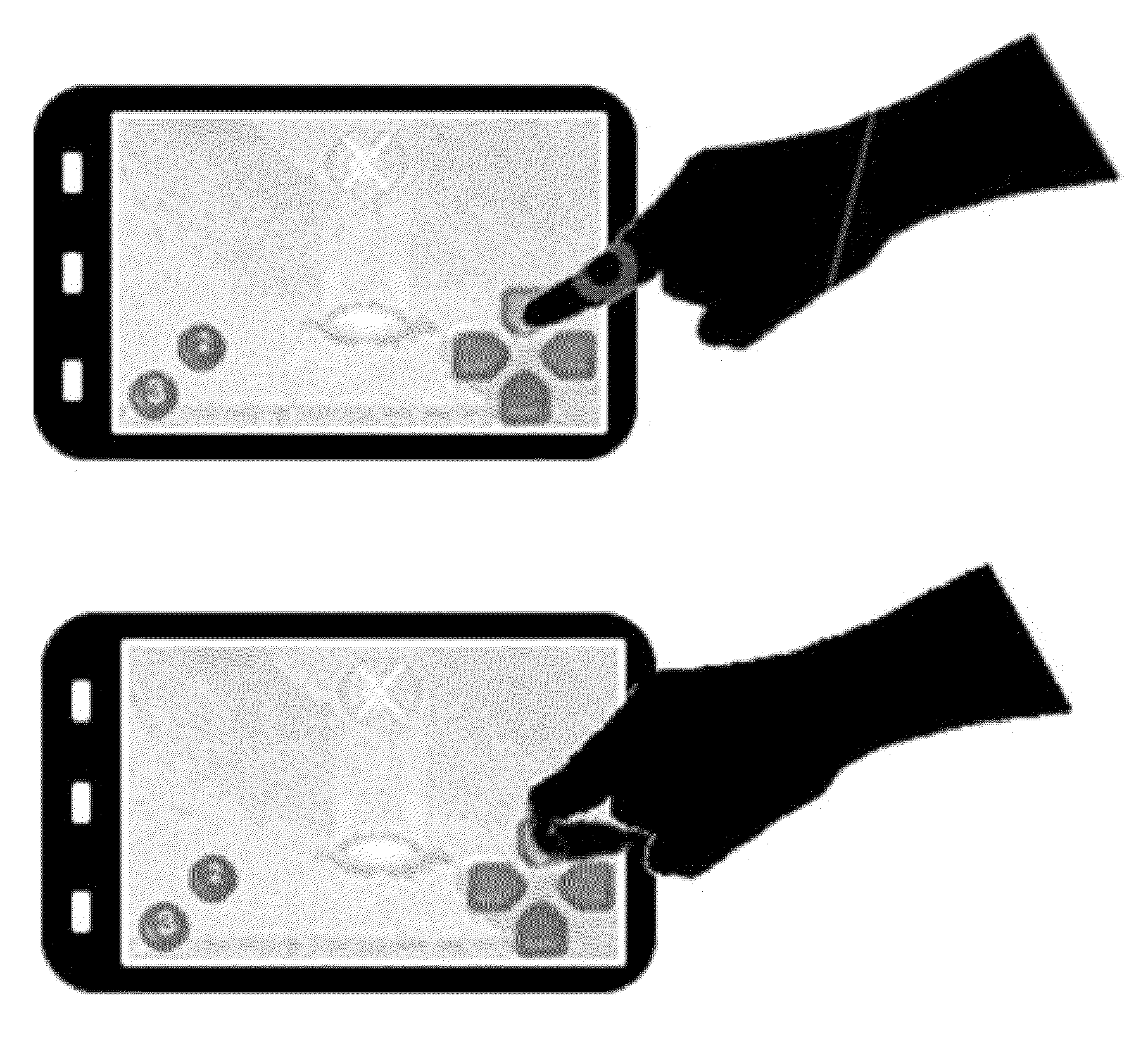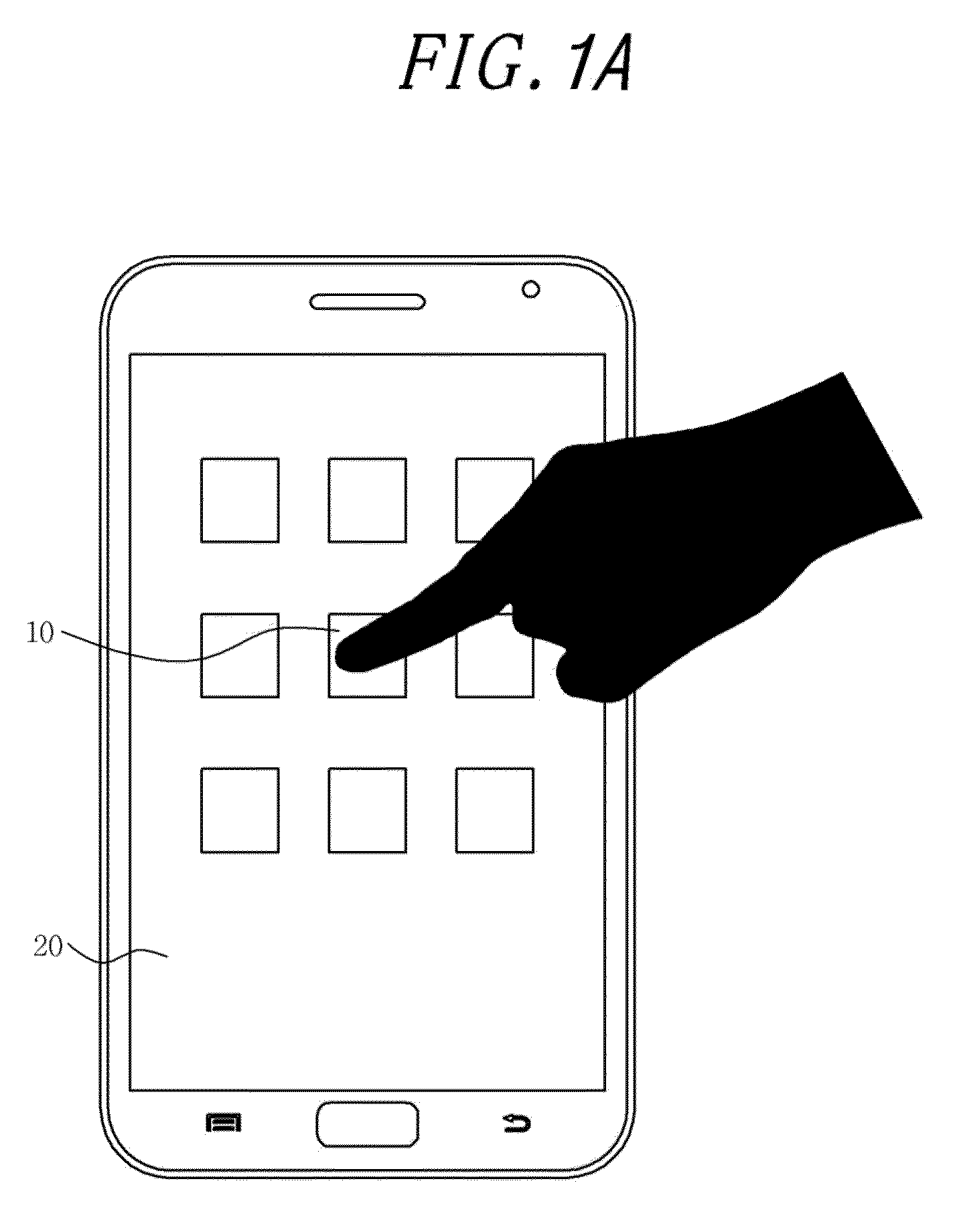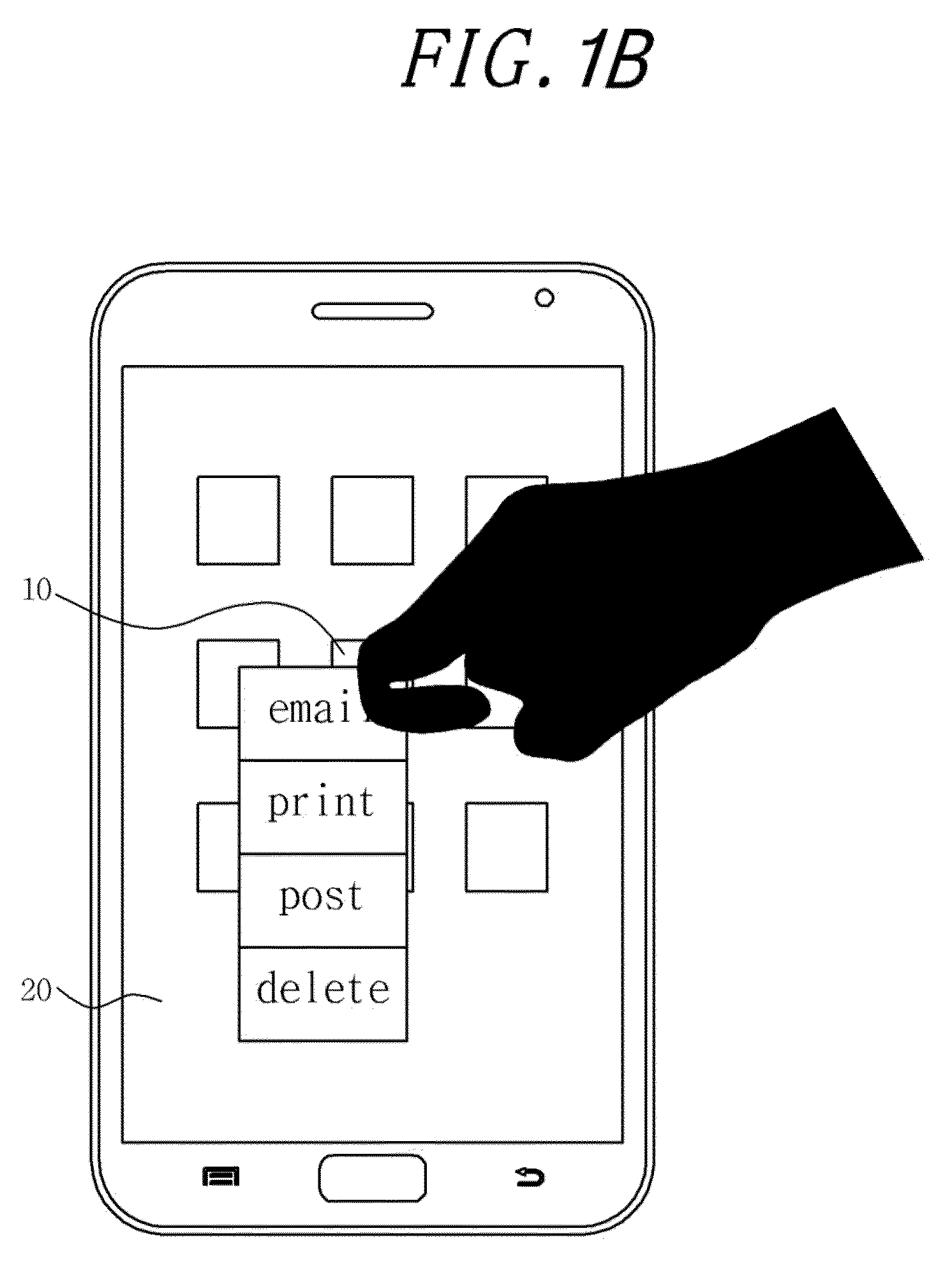Method and system for activating different interactive functions using different types of finger contacts
a technology of finger contact and activation function, applied in the field of finger touch, can solve the problems of limited screen real estate of mobile devices, inability to support additional finger input dimensions, and large size of the marker
- Summary
- Abstract
- Description
- Claims
- Application Information
AI Technical Summary
Benefits of technology
Problems solved by technology
Method used
Image
Examples
Embodiment Construction
[0023]The advantages and features of exemplary embodiments and methods of accomplishing these will be clearly understood from the following embodiments taken in conjunction with the accompanying drawings. However, the exemplary embodiments are not limited and may be implemented in various forms. It should be noted that the exemplary embodiments are provided to make a full disclosure and also to allow those skilled in the art to understand the full range of the exemplary embodiments. Therefore, the exemplary embodiments are to be defined only by the scope of the appended claims.
[0024]FIGS. 1A to 4B are exemplary diagrams illustrating a concept of activating different interactive functions based on a classification of vibro-acoustic signals in accordance with an exemplary embodiment of the present invention;
[0025]In brief, the concept of the present invention may be described as follow. A user touches or contacts a touch screen with one of the finger parts, e.g., a finger tip. Such a ...
PUM
 Login to View More
Login to View More Abstract
Description
Claims
Application Information
 Login to View More
Login to View More - R&D
- Intellectual Property
- Life Sciences
- Materials
- Tech Scout
- Unparalleled Data Quality
- Higher Quality Content
- 60% Fewer Hallucinations
Browse by: Latest US Patents, China's latest patents, Technical Efficacy Thesaurus, Application Domain, Technology Topic, Popular Technical Reports.
© 2025 PatSnap. All rights reserved.Legal|Privacy policy|Modern Slavery Act Transparency Statement|Sitemap|About US| Contact US: help@patsnap.com



